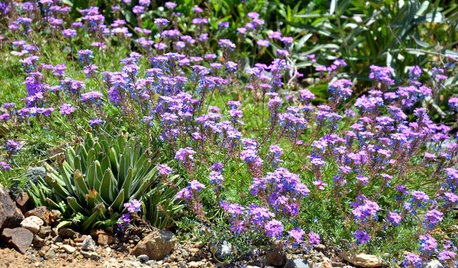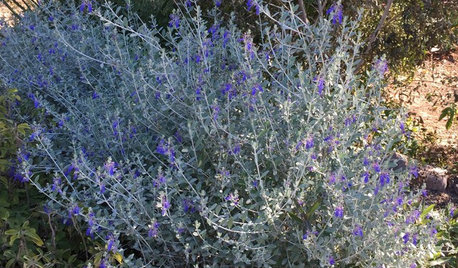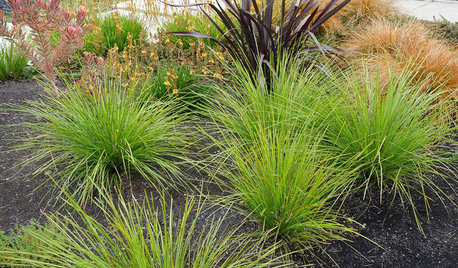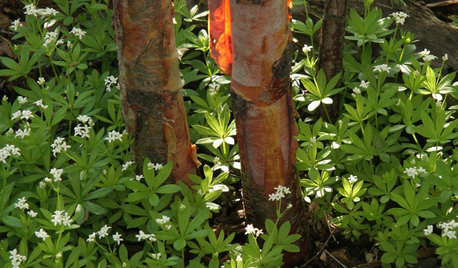Drought Resistant/Tolerant Vegetables
biradarcm
12 years ago
Related Stories

FLOWERS AND PLANTSGlandularia Pulchella Trails Color Through the Drought-Tolerant Garden
Masses of purple blossoms and finely textured foliage cover the ground of arid gardens from spring to fall
Full Story
GARDENING GUIDESGreat Design Plant: Teucrium Fruticans for Drought-Tolerant Gardens
The silvery-gray foliage and blue flowers of this Mediterranean native stand out in low-water landscapes
Full Story
GRASSESVersatile Breeze Mat Rush Sails Into Drought-Tolerant Yards
Grassy Lomandra longifolia thrives year-round in shady and sunny gardens, in containers and in the ground
Full Story
GARDENING GUIDESTop 12 Summer-Blooming Perennials for Deer-Resistant Drama
Can you have garden color, fragrance and exciting foliage with hungry deer afoot? These beauties say yes
Full Story
GARDENING GUIDES10 Deer-Resistant Native Flowers to Plant This Fall
Learn about natives that embrace some kinds of wildlife but resist grazing deer
Full Story
CONTAINER GARDENS7 Deer-Resistant Flowers for Your Summer Containers
Grow these as protection for edibles or just for their colorful beauty — deer might not like them, but everyone else will
Full Story
GARDENING GUIDESGreat Garden Combo: 3 Wonderful Plants for a Deer-Resistant Screen
Protect your privacy and keep deer at bay with a planting trio that turns a problem garden area into a highlight
Full Story
TREES7 Deer-Resistant Flowering Trees to Plant this Fall
If you live in a neighborhood with roaming deer, consider these beautiful trees that won't tempt hungry guests
Full Story
GARDENING GUIDES6 Deer-Resistant Ground Covers to Plant This Fall
Learn about some of the only low, spreading plants that are reliably deer-resistant
Full Story
GARDENING GUIDES8 Deer-Resistant Elegant Evergreen Shrubs to Plant This Fall
Who knew that such beautiful shrubs could be deer-resistant?
Full StorySponsored
Industry Leading Interior Designers & Decorators in Franklin County
More Discussions






elkwc
Macmex
Related Professionals
Carson Landscape Architects & Landscape Designers · Roosevelt Landscape Architects & Landscape Designers · Cincinnati Landscape Contractors · El Segundo Landscape Contractors · Flagstaff Landscape Contractors · Gainesville Landscape Contractors · Oak Harbor Landscape Contractors · Ocoee Landscape Contractors · Olympia Landscape Contractors · Seven Hills Landscape Contractors · Boynton Beach Decks, Patios & Outdoor Enclosures · Carmel Decks, Patios & Outdoor Enclosures · Gladstone Decks, Patios & Outdoor Enclosures · Rosemont Decks, Patios & Outdoor Enclosures · Roseville Decks, Patios & Outdoor EnclosuresOkiedawn OK Zone 7
elkwc
soonergrandmom
mulberryknob
Macmex
elkwc
Okiedawn OK Zone 7
mulberryknob
seedmama
soonergrandmom
merrybookwyrm
dott22
soonergrandmom
Macmex
Okiedawn OK Zone 7
biradarcmOriginal Author
AmyinOwasso/zone 6b
hazelinok
AmyinOwasso/zone 6b